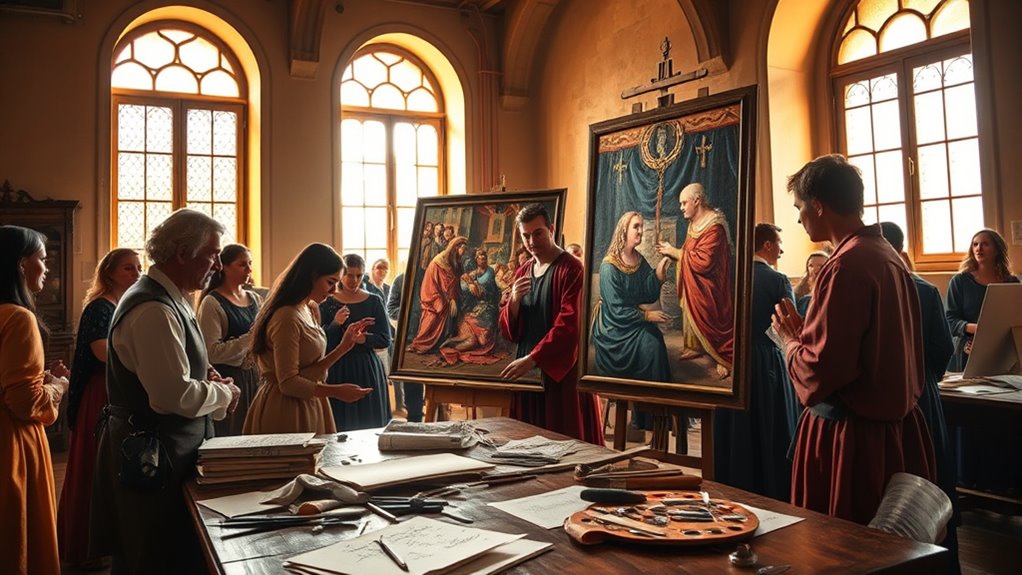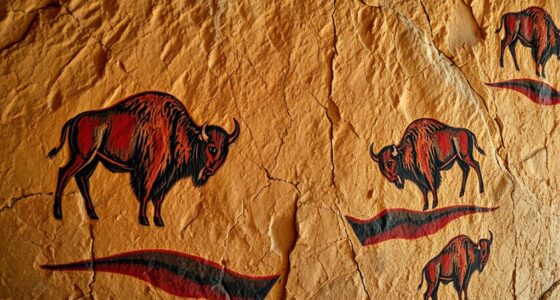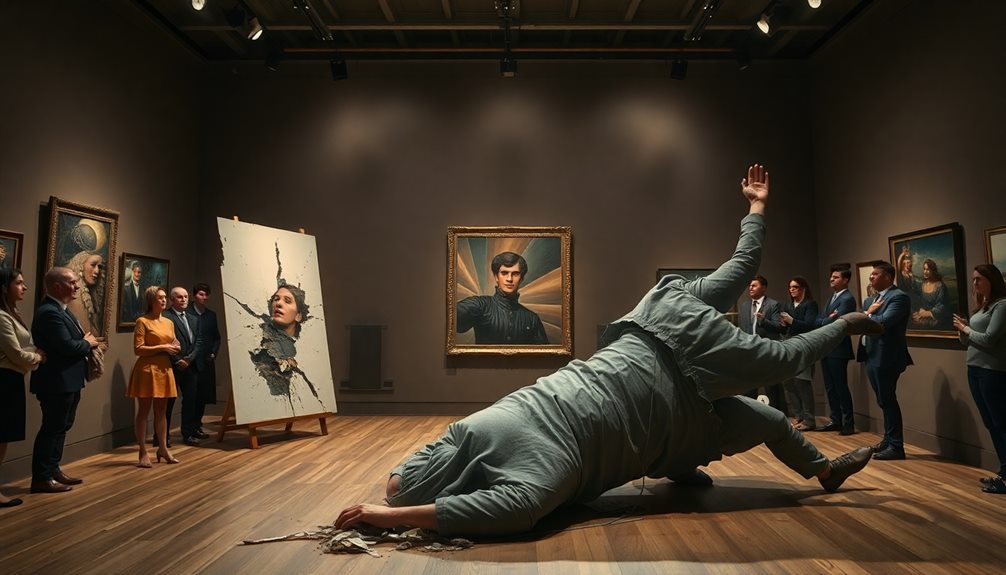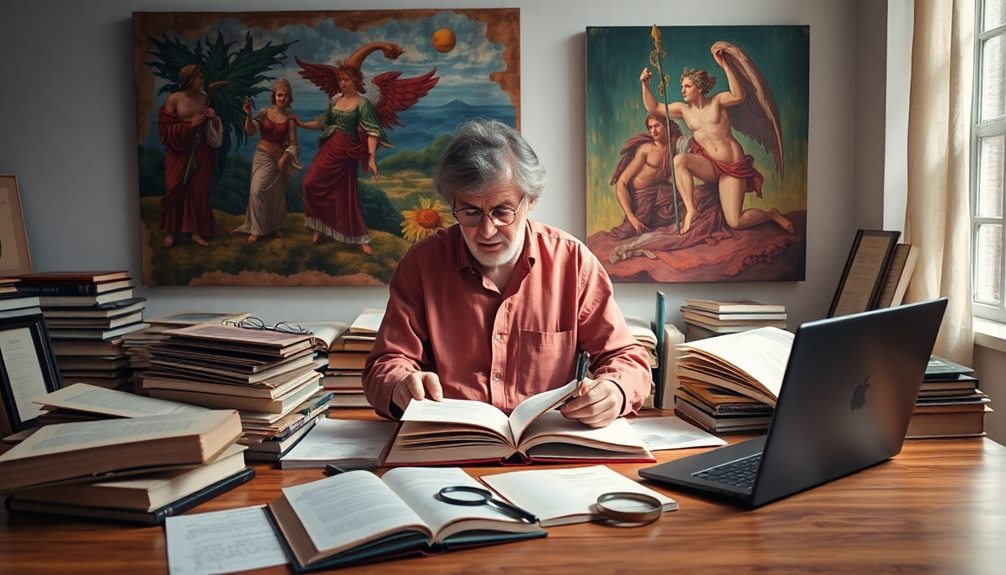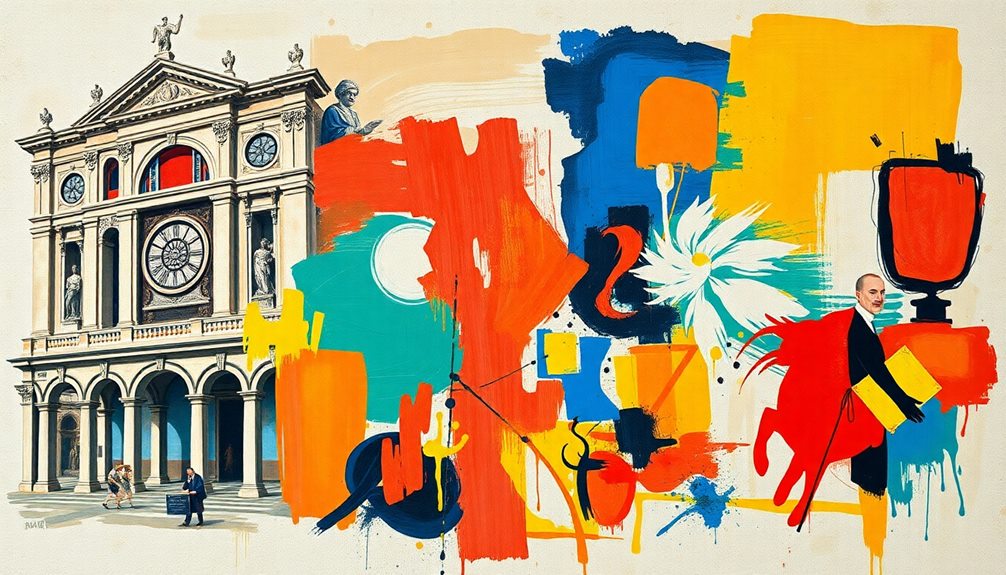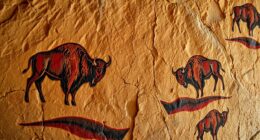During the Renaissance, artists like Leonardo da Vinci and Michelangelo revolutionized art with new techniques such as perspective, anatomy, and realistic lighting, blending science and creativity. Scientific discoveries, including Galileo’s telescopic observations, challenged old views and influenced artistic realism. Wealthy patrons like the Medici fostered innovation across disciplines, merging science and art. This vibrant period set the stage for further breakthroughs—continue exploring to see how these innovations changed the world forever.
Key Takeaways
- Leonardo da Vinci exemplified multidisciplinary innovation with art, anatomy, engineering, and scientific exploration during the Renaissance.
- Artistic techniques like perspective and chiaroscuro advanced through scientific understanding of light and anatomy.
- The Medici family’s patronage fostered the growth of both revolutionary art and scientific discoveries in Florence.
- Galileo Galilei’s telescopic observations challenged traditional views, blending scientific inquiry with artistic realism.
- The invention of the printing press spread Renaissance ideas, innovations, and artworks widely, accelerating cultural and scientific progress.
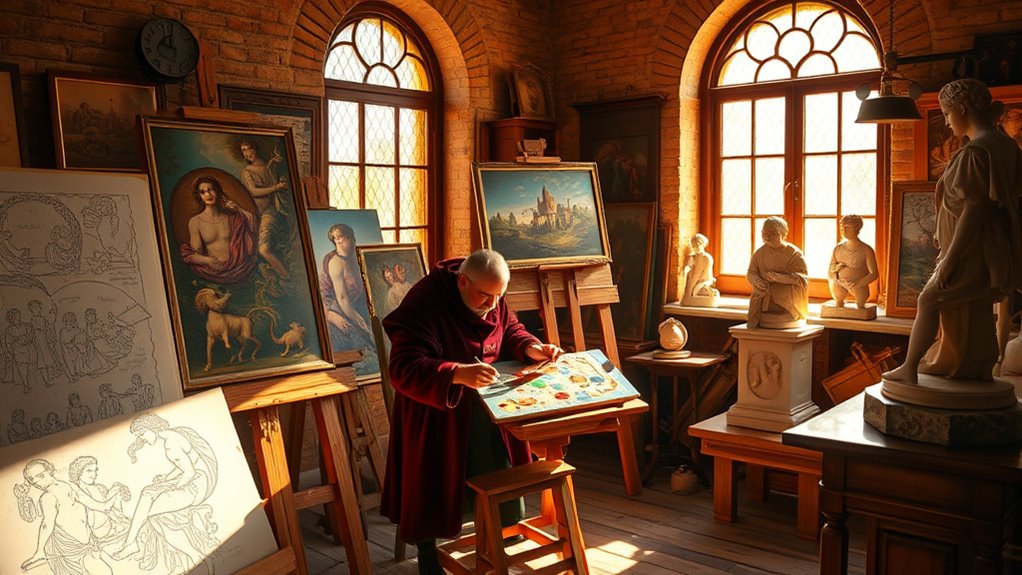
The Renaissance was a groundbreaking period that transformed art and innovation across Europe. During this time, you witness a surge of creativity fueled by influential patrons and groundbreaking ideas. The Medici family, for instance, played a pivotal role in this transformation. As wealthy bankers and political leaders in Florence, they supported artists, scholars, and scientists, creating a vibrant environment where innovation thrived. Their patronage didn’t just fund art; it also fostered a culture of curiosity that led to remarkable scientific discoveries. You see, this family’s influence helped bridge the gap between art and science, encouraging figures like Leonardo da Vinci to explore anatomy, engineering, and physics alongside their artistic pursuits. This interconnected support system accelerated progress in many fields, making Florence a hub of knowledge and artistic excellence.
As you explore more deeply into this period, you realize that scientific discoveries became an essential part of the Renaissance narrative. The era was marked not only by stunning artwork but also by a shift toward empirical observation and experimentation. Think of inventors and scientists like Galileo Galilei, whose work with telescopes revealed new worlds beyond what the naked eye could see. These discoveries challenged traditional views and laid the groundwork for modern science. The Renaissance wasn’t just about rediscovering classical art and philosophy; it was about applying new methods to understand the universe more accurately. This spirit of inquiry pushed boundaries, inspiring artists to incorporate new perspectives, lighting techniques, and anatomical accuracy into their work. Scientific inquiry became a cornerstone of Renaissance innovation, fostering a multidisciplinary approach that combined art, science, and philosophy. Additionally, the development of new technological tools like the printing press helped disseminate knowledge more broadly, fueling further discoveries and artistic achievements. Moreover, the integration of anatomical knowledge into artistic practice allowed for more realistic and expressive representations of the human form, reflecting the era’s scientific curiosity. This blending of disciplines exemplifies how the Renaissance was truly a period of comprehensive intellectual progress.
Frequently Asked Questions
How Did Renaissance Art Influence Modern Artistic Techniques?
You see that Renaissance art profoundly influences modern techniques through innovations like perspective techniques and chiaroscuro effects. These methods create depth and realistic lighting, shaping how contemporary artists depict scenes and characters. By mastering these concepts, you can enhance your artwork’s realism and emotional impact. Renaissance artists set foundational principles that continue to inspire and inform modern art, making their techniques essential tools for creative expression today.
What Were the Primary Sources of Inspiration for Renaissance Artists?
Did you know that over 60% of Renaissance art drew inspiration from classical mythology and religious themes? As you explore their work, you’ll see how these sources fueled creativity. Renaissance artists looked to ancient Greece and Rome for classical mythology, blending it with religious themes from Christianity. This combination allowed them to express human emotion and spirituality in new, innovative ways, shaping the foundation of Western art.
How Did Renaissance Innovations Impact Scientific Discoveries?
You see that Renaissance innovations markedly impacted scientific discoveries by shifting away from medieval scientific methods, which relied heavily on tradition and authority. Renaissance technological advances, like the printing press and improved instruments, allowed you to observe, analyze, and share findings more effectively. These changes fostered a new spirit of inquiry, encouraging you to challenge old ideas and explore new scientific horizons, laying the foundation for modern science.
Were There Regional Differences in Renaissance Art and Innovations?
You might think Renaissance art was a uniform explosion of brilliance, but regional styles and local techniques created a vibrant mosaic across Europe. In Italy, you see dramatic realism and perspective, while Northern Europe emphasizes intricate detail and symbolism. These differences are like the unique fingerprints of each region, reflecting local culture and resources, making Renaissance innovations a truly diverse and dynamic movement that varies remarkably from place to place.
How Did Patronage Shape the Development of Renaissance Art?
You see, patronage played a vital role in shaping Renaissance art. The Medici influence, for example, encouraged artists to experiment and innovate because they had powerful patrons. Church sponsorship also directed art toward religious themes, fostering masterpieces that conveyed spiritual messages. Without such support, many artists wouldn’t have had the resources or motivation to create their groundbreaking works, making patronage essential for the era’s artistic development.
Conclusion
As you reflect on the Renaissance’s brilliance, it’s clear that these artists and innovations truly changed the game. Their creativity and breakthroughs laid the foundation for modern art and thought, proving that pushing boundaries can lead to greatness. Remember, when it comes to innovation, don’t put all your eggs in one basket. Embrace new ideas and keep exploring—because in this era of rebirth, those bold moves made all the difference.
